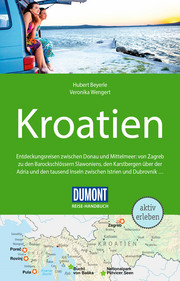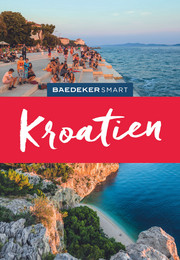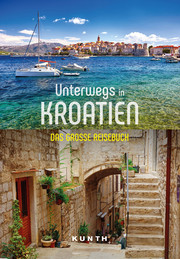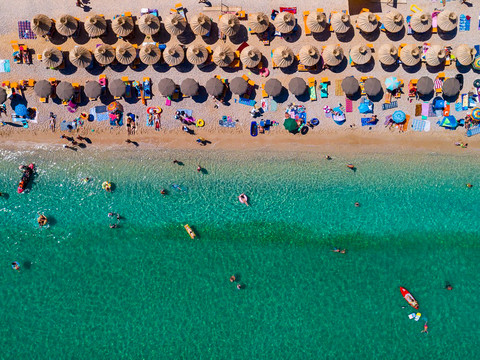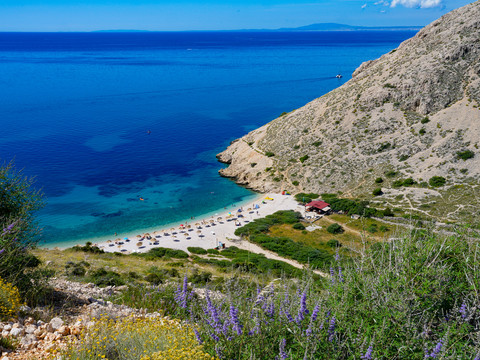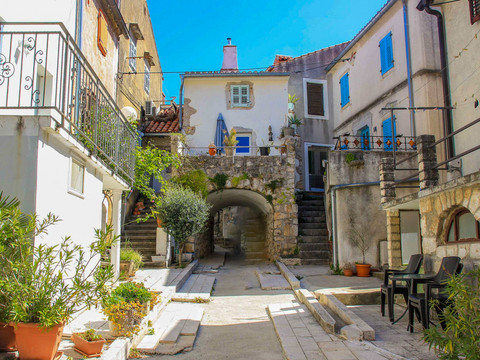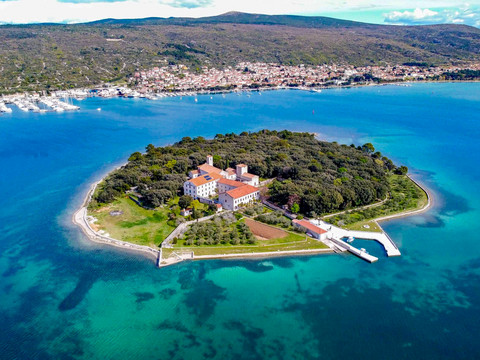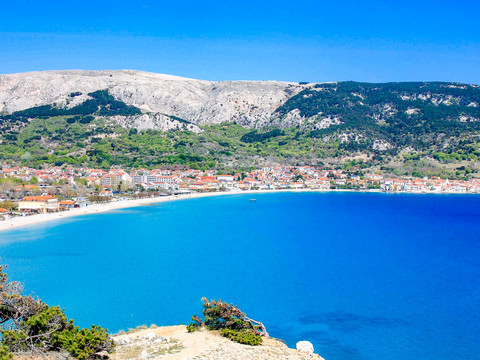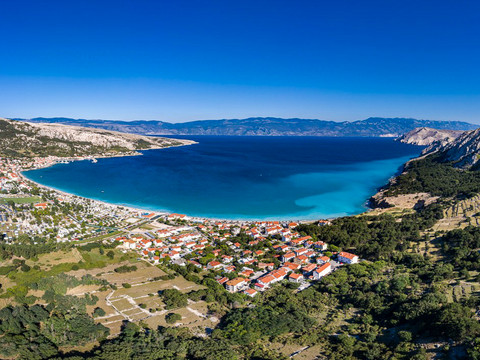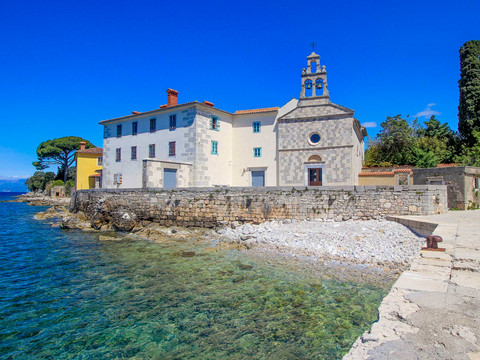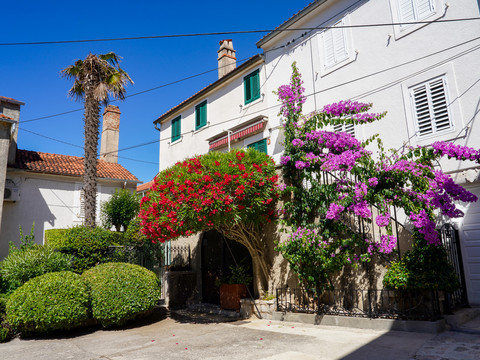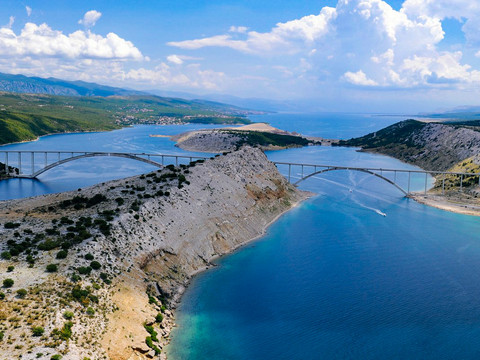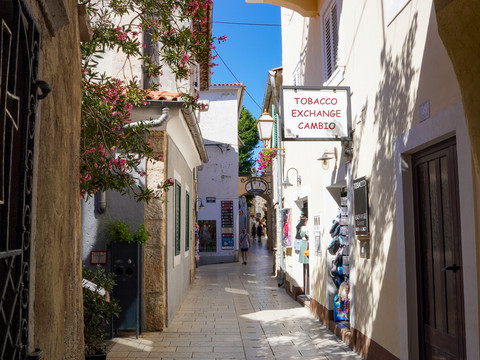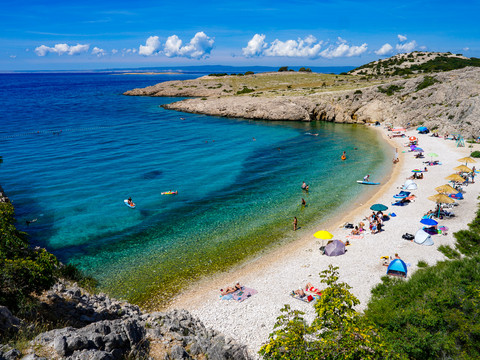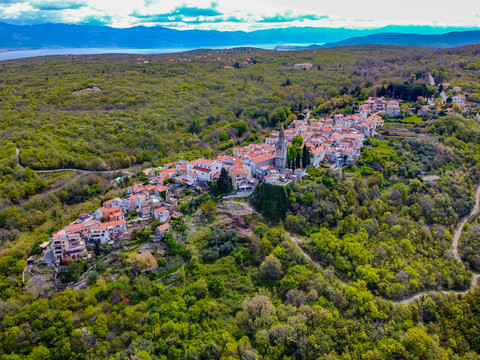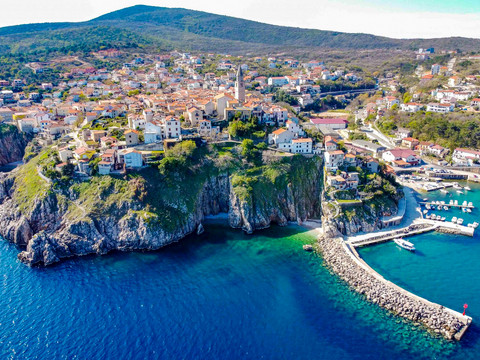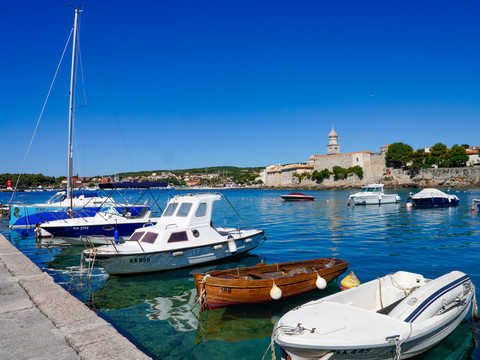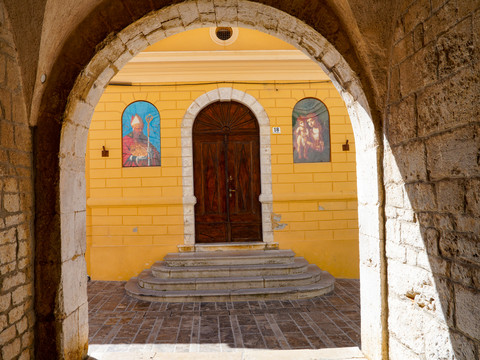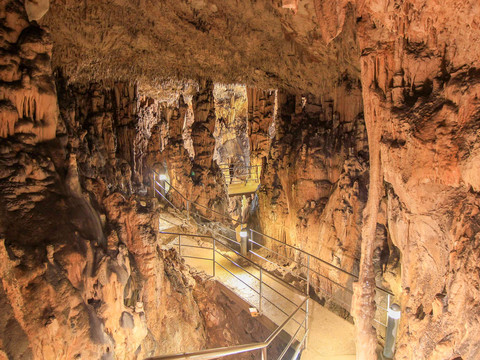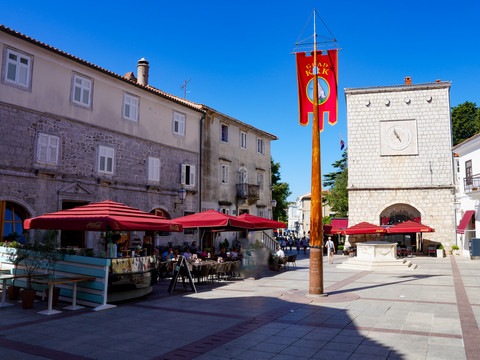The largest island in Croatia is famous for its numerous paradisiacal beaches and turquoise coves, but there are also many interesting cultural treasures to discover. Magnificent nature with high karst mountains, charming coastal towns, and unique charm make this island a real highlight in all of Croatia. Travelers love the wide range of activities offered. Whether it's sightseeing, culture, nature, sports, or simply relaxing by the sea, there's plenty to experience on Krk, ensuring that every vacationer will have a great time.
The island of Krk, located in the heart of the Kvarner Bay, is the largest island in the Croatian archipelago with an area of 405 km², alongside its sister island Cres. Since ancient times, Krk has been called the "Golden Island" and still proudly bears this lovely nickname. A special feature is undoubtedly the many "golden" days of sunshine, as during a stay in Krk, you will enjoy a Mediterranean climate and wonderful weather with around 2,500 hours of sunshine per year! The best time for a beach holiday on Krk is between May and the end of September. During this time, you can generally enjoy plenty of sun and little rain!
But above all, it's the breathtaking beaches, the countless opportunities for activities such as hiking, cycling, and water sports, and the numerous tourist attractions that make Krk a true holiday paradise. Over a coastline of about 200 kilometers, there are more than 100 beaches and bathing spots to choose from, each one more beautiful than the last. Most of these beaches are pebble coves, rock and stone beaches, surrounded by picturesque landscapes and beautifully colored sea. Good hotels and campsites, from simple to luxurious, complement the tourist offer and guarantee unforgettable holidays on the Adriatic. The only downside is that since the introduction of the euro in early 2023, prices have unfortunately increased significantly. The journey is usually by car via the Krk Bridge. Even from afar, as you approach, the symbol of the tourist island, the Krčki most bridge, comes into view, which has been connecting the island to the mainland for over forty years, allowing for a comfortable arrival; since 2020, there has been no toll fee for the bridge.
One of the most beautiful places and at the same time the capital is the town of Krk with its picturesque old town. Among the most interesting attractions are the Frankopan Castle with its impressive fortifications, the picturesque main square "Placa Vela", and the Assumption of the Virgin Mary Cathedral with its elegant onion dome. When strolling through the historic center, you wander through a labyrinth of cobblestone streets, discover small boutiques and galleries, and marvel at the unique medieval atmosphere. The picturesque harbor is also very charming, where cozy cafes, bars, and restaurants invite you to relax. However, the town of Krk is not only popular as an excursion destination. The island capital is also a popular holiday destination, where numerous dream beaches along the picturesque coast delight vacationers.
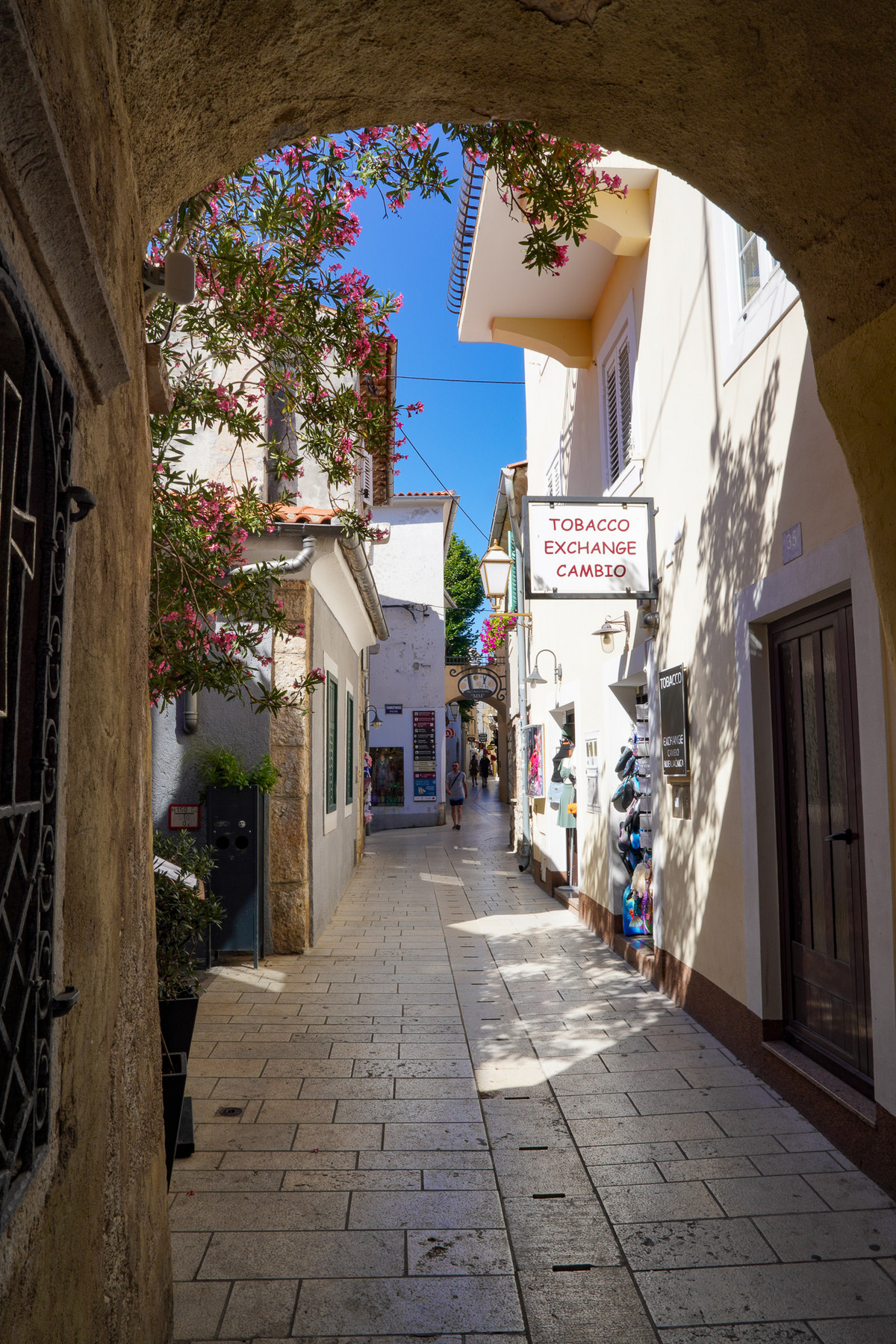
In the southwest of the island, the wine town of Vrbnik awaits to be discovered by you. The historic old town is particularly impressive, built on a nearly 50-meter high cliff above the coast. Right in the center, there are many monuments, buildings, and churches to admire. The charming village is also a pilgrimage site for all Croatians interested in the Glagolitic script as an element of their cultural heritage; a small printing museum provides detailed information on this. A small highlight is the tiny alley Klancic; with a width of only 40 cm, it is one of the narrowest alleys in the world. Vrbnik is most beautiful in the evening when the wine bars and restaurants open and invite you to enjoy the magnificent view. Do not leave Vrbnik without tasting the exquisite local white wine, Zlahtina. The beaches around Vrbnik are also exquisite and a perfect place for a beach holiday on the island. Along the coast, picturesque natural coves line up, and even a magnificent sandy beach is located not far from the town.
In the south of the island, the famous holiday resort of Baska beckons. The former fishing village is located against a backdrop of stunning scenery and offers numerous paradisiacal beaches as well as a pretty old town, with houses built closely together right up to the sea. On the promenade of the 2 km long white pebble beach and charming harbor, you will find many good restaurants and cozy cafes. But the lanes of the colorful old town in the second row are picturesque, and at every street corner, you will discover beautiful places, galleries, and museums; there is even a small aquarium in Baska. In the hinterland lies the imposing karst plateau of Prijevoj Vratudih, where you can enjoy extensive hiking and cycling tours.
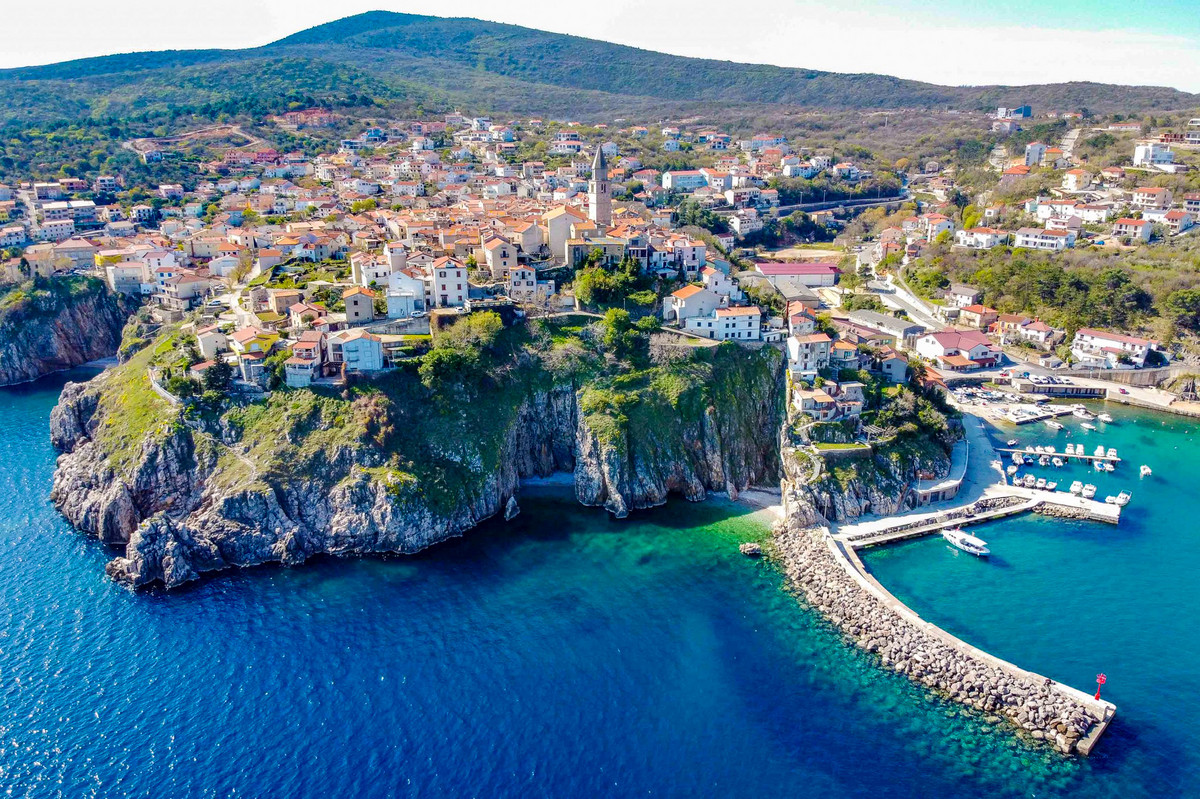
Krk is famous for its countless picturesque coves and beaches. A real tourist magnet is the bay of Vela Luka, a pebble beach with turquoise blue sea colors, located east of the town of Baska. This picturesque natural beach can be reached by taxi boat or via a varied hike through the karstic mountains. Many spend their beach day here and indulge in culinary delights at the local tavern. The most stunning view is from the Rebica viewpoint, where you can enjoy a magnificent panoramic view of the two bays of Vela Luka and Mala Luka. Even more spectacular is the viewpoint at Baska. This is accessible by a short 20-minute hike from the main beach in Baska. From up there, you can enjoy breathtaking views of the coast, where the turquoise sea blends with the mountains to create an enchanting backdrop. For those who fancy it, a hike from the viewpoint will take you to the red lighthouse next to the natural cove of Skuljica. Here, you can enjoy a swim in unique nature and additionally enjoy a splendid view of the neighboring vulture island, Prvic. With a bit of luck, you might even spot one of the rare vultures soaring high in the sky; together with the neighboring islands of Cres and Prvic, the last Croatian refuges of the large scavenger birds.
Stara Baska is a true hidden gem on the island of Krk. This tiny village of only 100 inhabitants is located in the southeast of the island and impresses especially with its beautiful coastal landscape. Over a length of about 3 kilometers, you will find true dream bays, which, together with the karstic mountains in the hinterland, create a phenomenal landscape. Not only beautiful to look at, but you can also spend unforgettable beach days on the picturesque natural beaches of Stara Baska. Moreover, the sea in this region is extremely clear, so snorkelers will also get their money's worth.
Need a rainy day activity or looking for some cooling off? The Biserujka cave, also known as Vitezic cave, is one of the most beautiful natural attractions on the island of Krk and also a suggestion for an excursion on rainy days or a welcome cooling off on hot summer days. The temperature remains constantly around 15 degrees Celsius throughout the year. With a guide, you will explore a small but nonetheless impressive cave of stalactites and stalagmites, 110 meters long and only 12 meters wide.
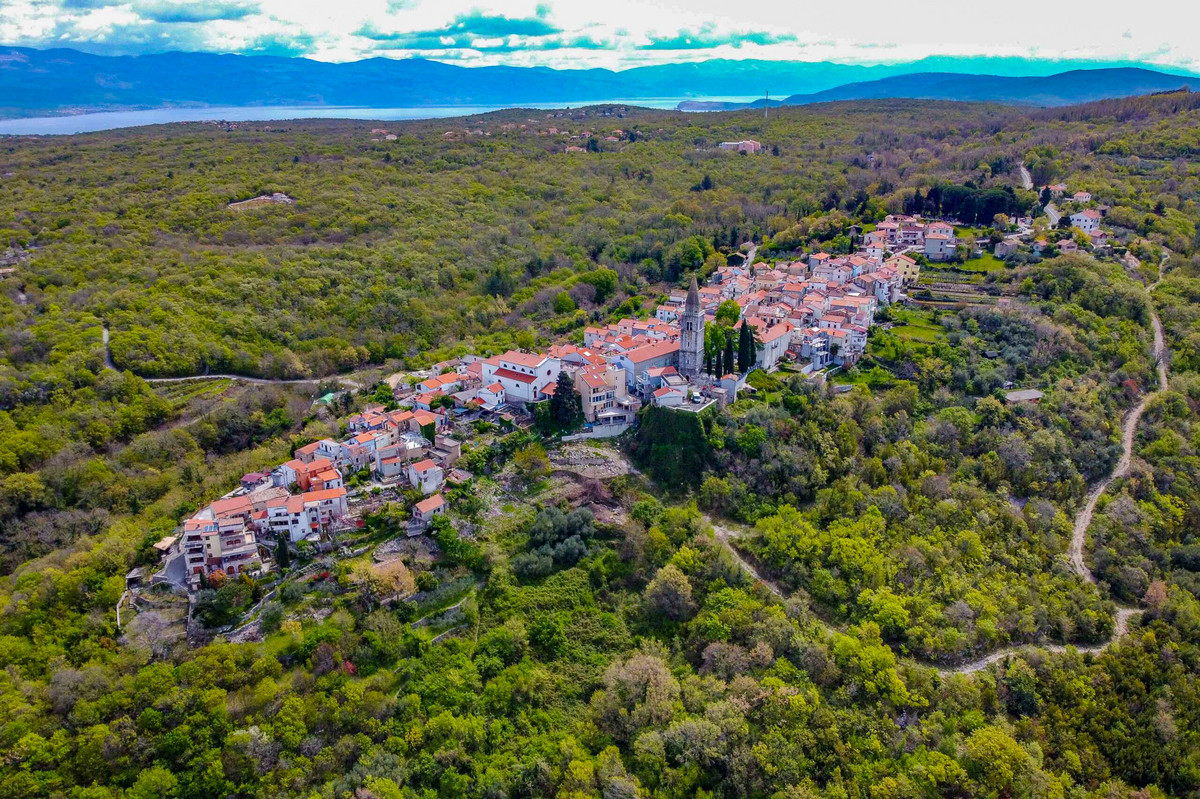
Culture enthusiasts can visit the monastery island of Kosljun, covered with holm oak forest, in the sheltered bay of Punat; reachable in a few minutes by taxi boat. The medieval Franciscan monastery was a center for the dissemination of the Glagolitic script, as evidenced by numerous documents from the 30,000 volumes of its library. Today, the monastery houses four museums: an archaeological museum, a sacred museum, an ethnographic museum, and a natural history museum. To explore more archaeology, head to Fulfinum Mirine, one of the most important archaeological sites on the island. Here, you can admire the remains of the former Roman settlement from the first century. Although some parts of the ruined city have already sunk into the sea, the impressive cross-shaped basilica from the 5th century, which is still in remarkably good condition, is impressive.
The monastery of Glavotok, a hidden gem located in the west of Krk, was founded in the Middle Ages by the Franciscans, also known as Glagolitic monks. The single-nave Renaissance-style church can also be entered, inside of which stands a beautiful main altar. After so much culture, just a few steps from the monastery, is a picturesque bay, perfect for swimming and snorkeling.
For those who still have energy in the evening after a day of culture or a day at the beach, it is possible to try one or the other dance club, due to the short distances. A hotspot for partygoers is the Porto Club Baska in the town of the same name - a beach lounge bar at "Vela plaža" - which offers everything from morning cappuccino on the terrace with sea view to Aperol Spritz at the after-party. The evening program often includes live music, followed by DJ sets until the early hours of the morning. The Volsonis is located in a 2000-year-old Romanesque vault in the town of Krk and is the ultimate party spot on Krk. The largest night bar on the island impresses with a unique atmosphere, good cocktails, and live music. Finally, mention must be made of Club Boa in Malinska. This popular discotheque offers various events and DJ nights in the techno and electro genres.
To properly prepare for your trip
Here's how to get there:
by car or by train (Nightjet) to Rijeka and then rent a car
Here's how to get around:
Quad or rental scooter, for example at https://rentscooter-krk.com
How long should I stay:
1 to 2 weeks
Best time to travel:
Summer months - May to October
Hotel recommendation:
Holiday House Pulina or Luxury Hotel Riva
Highlights:
Bays near Stara Baska, Krk town, Vrbnik
More information:
https://visitkrk.croatia.hr/de-de
Realised by Michael Bachmann
Further travel pictures under www.kissed-by-nature.com

